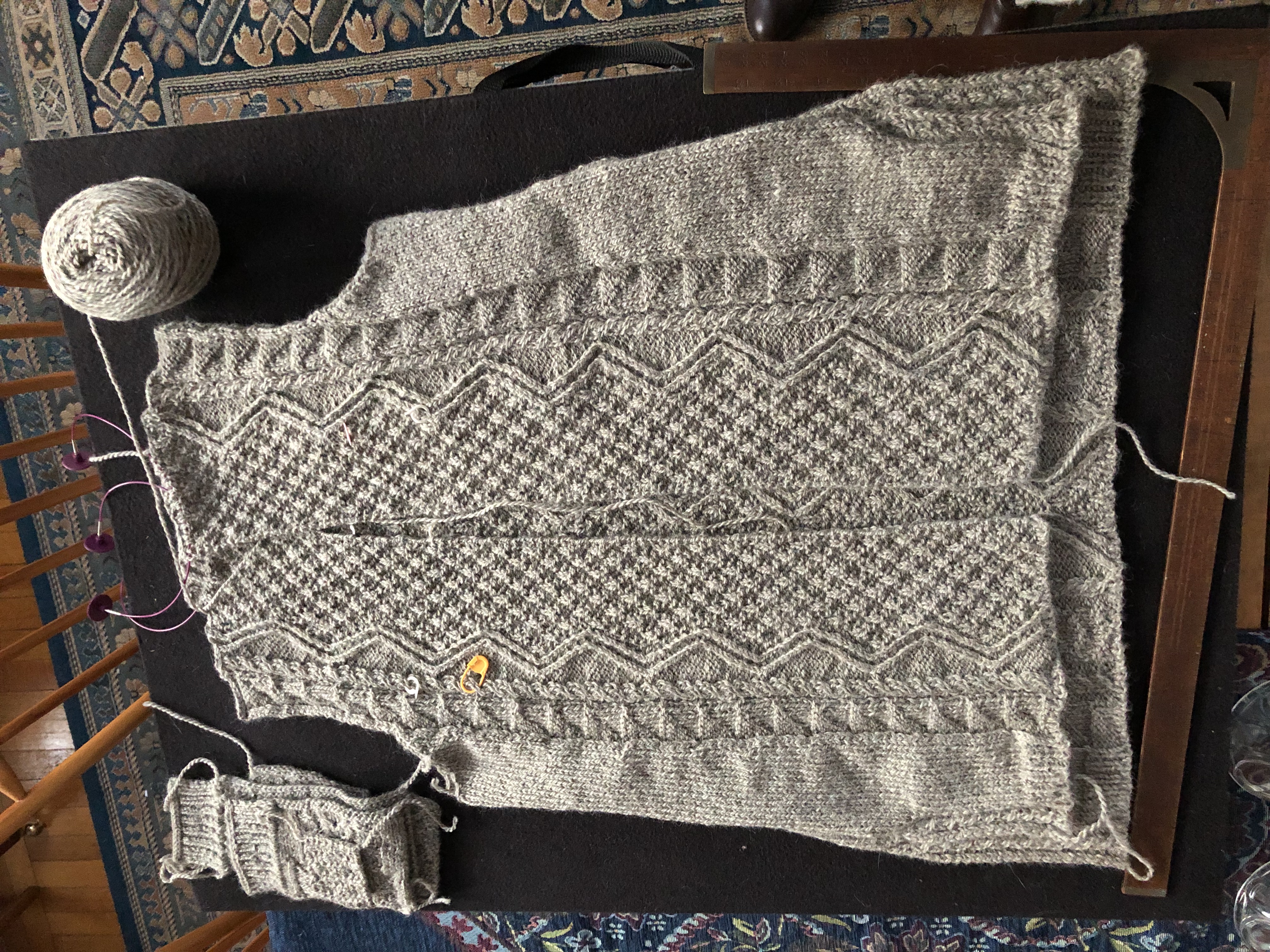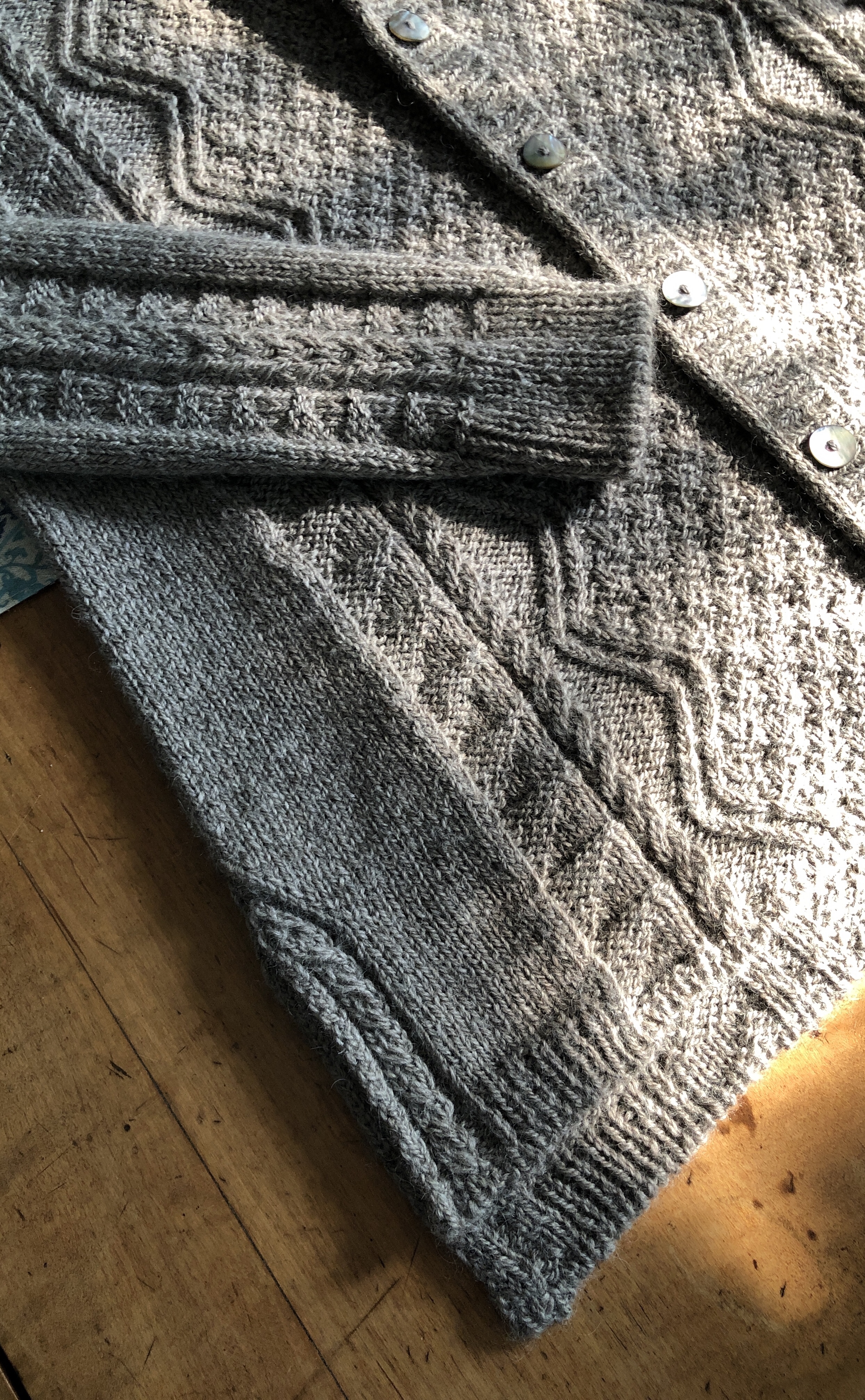
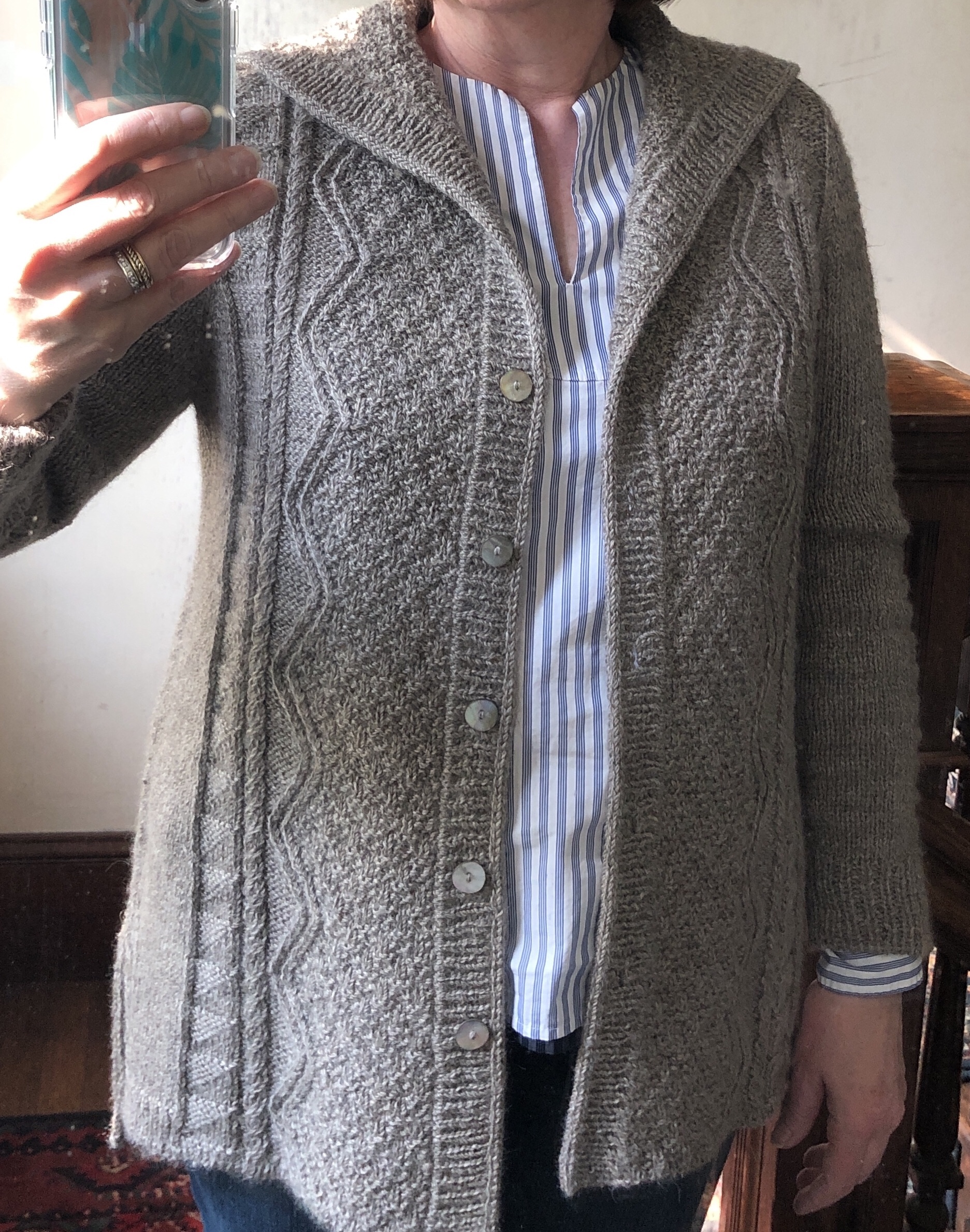
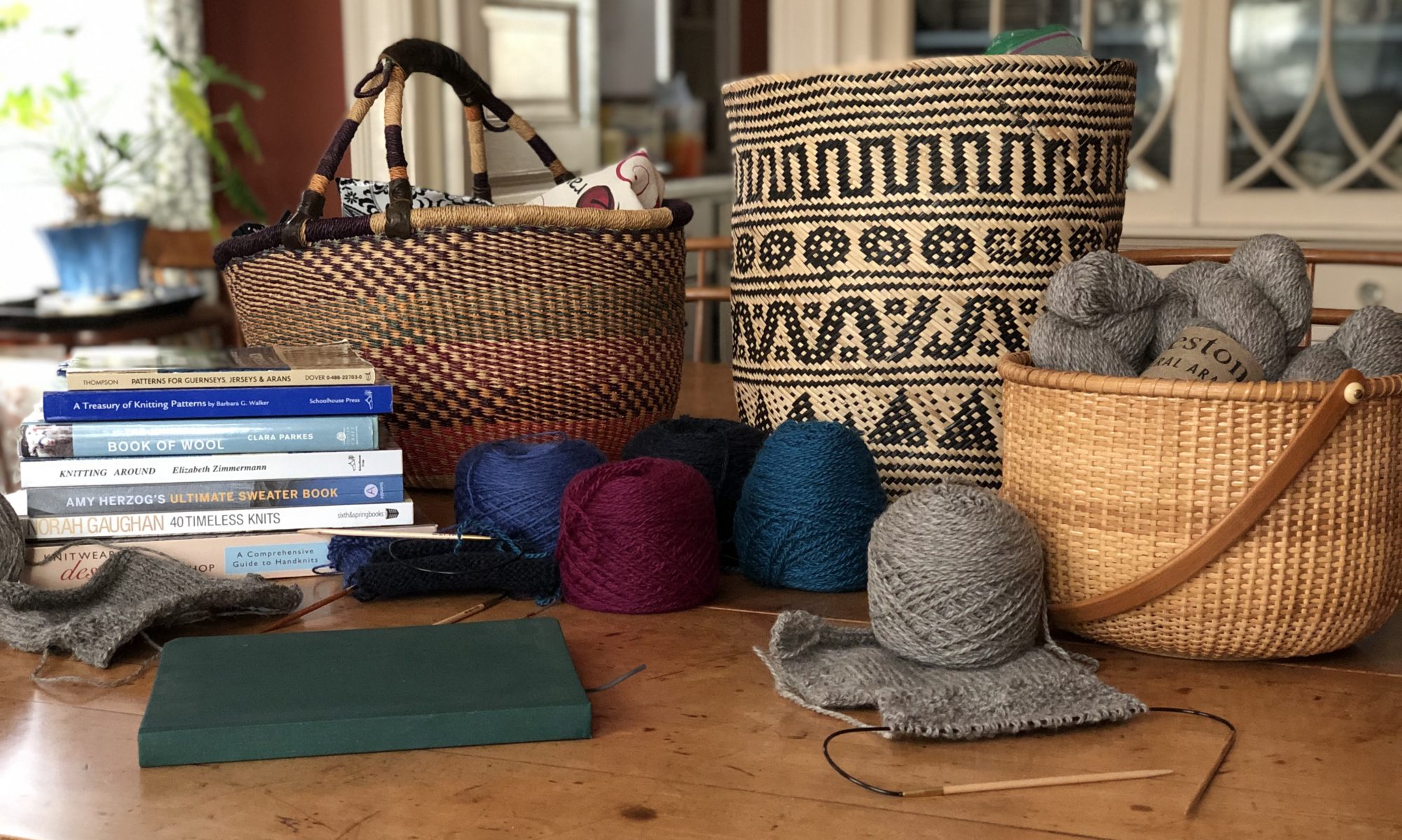
My knitting work in progress


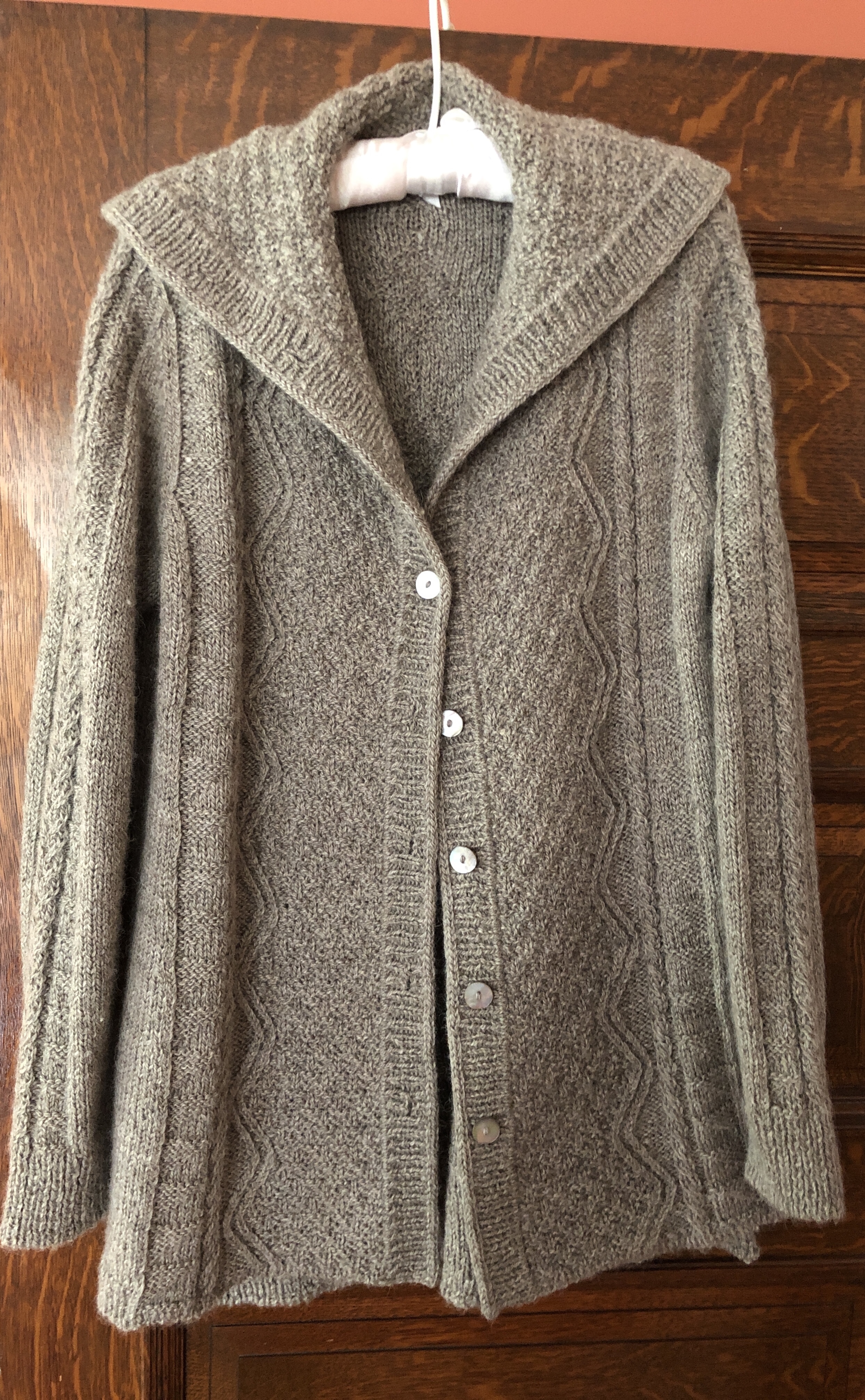 After all my fretting about how shrunken the sweater looked as I was knitting, and whether I had miscalculated the fit, everything relaxed in the wash as planned, and the fit is perfect, just the right amount of ease when buttoned. And the fabric drapes beautifully — so glad I sought out a longwool yarn.
After all my fretting about how shrunken the sweater looked as I was knitting, and whether I had miscalculated the fit, everything relaxed in the wash as planned, and the fit is perfect, just the right amount of ease when buttoned. And the fabric drapes beautifully — so glad I sought out a longwool yarn. 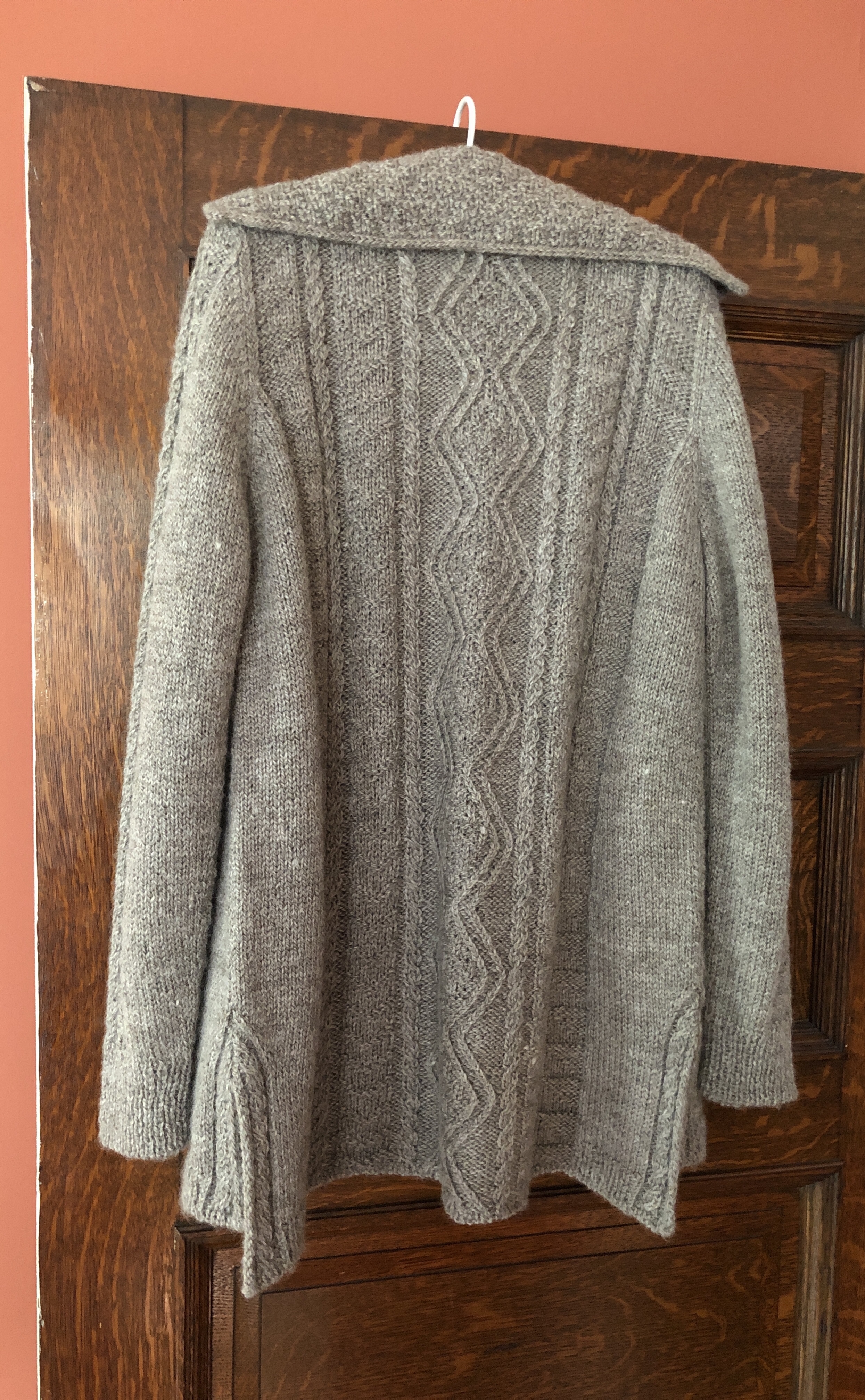 I think the back is my favorite part of the sweater — I wish the front had more of this look, but once I committed to reversible lapels, my options for the center panel were limited.
I think the back is my favorite part of the sweater — I wish the front had more of this look, but once I committed to reversible lapels, my options for the center panel were limited.
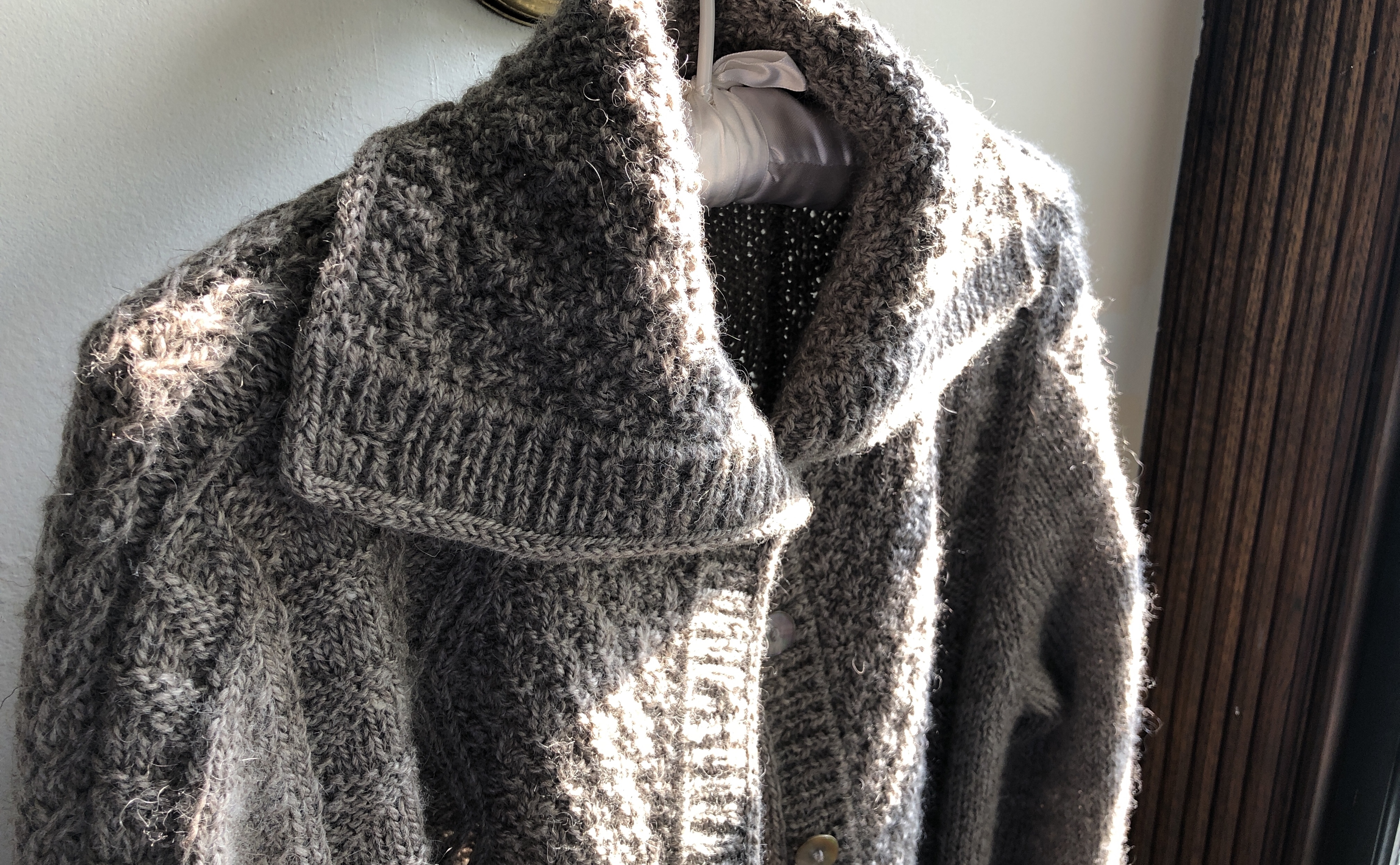
The collar can be buttoned up to the neck on chilly days.
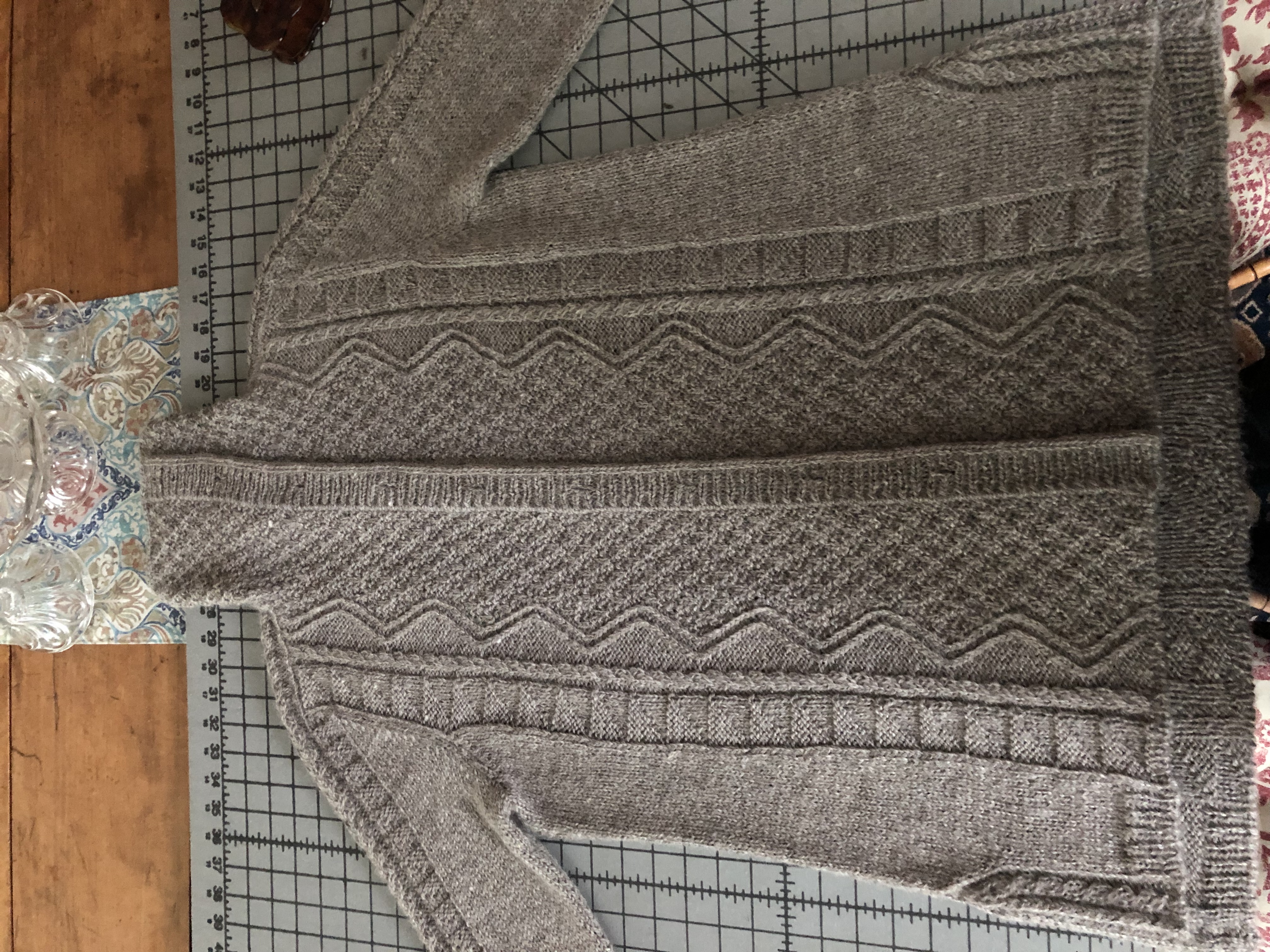
This washed beautifully. I’m doing minimalist blocking — no pins, just a laying it out and verifying that the measurements are still as expected. All those lumps and bumps I. The sleeves from multiple re-knittings disappeared like magic.
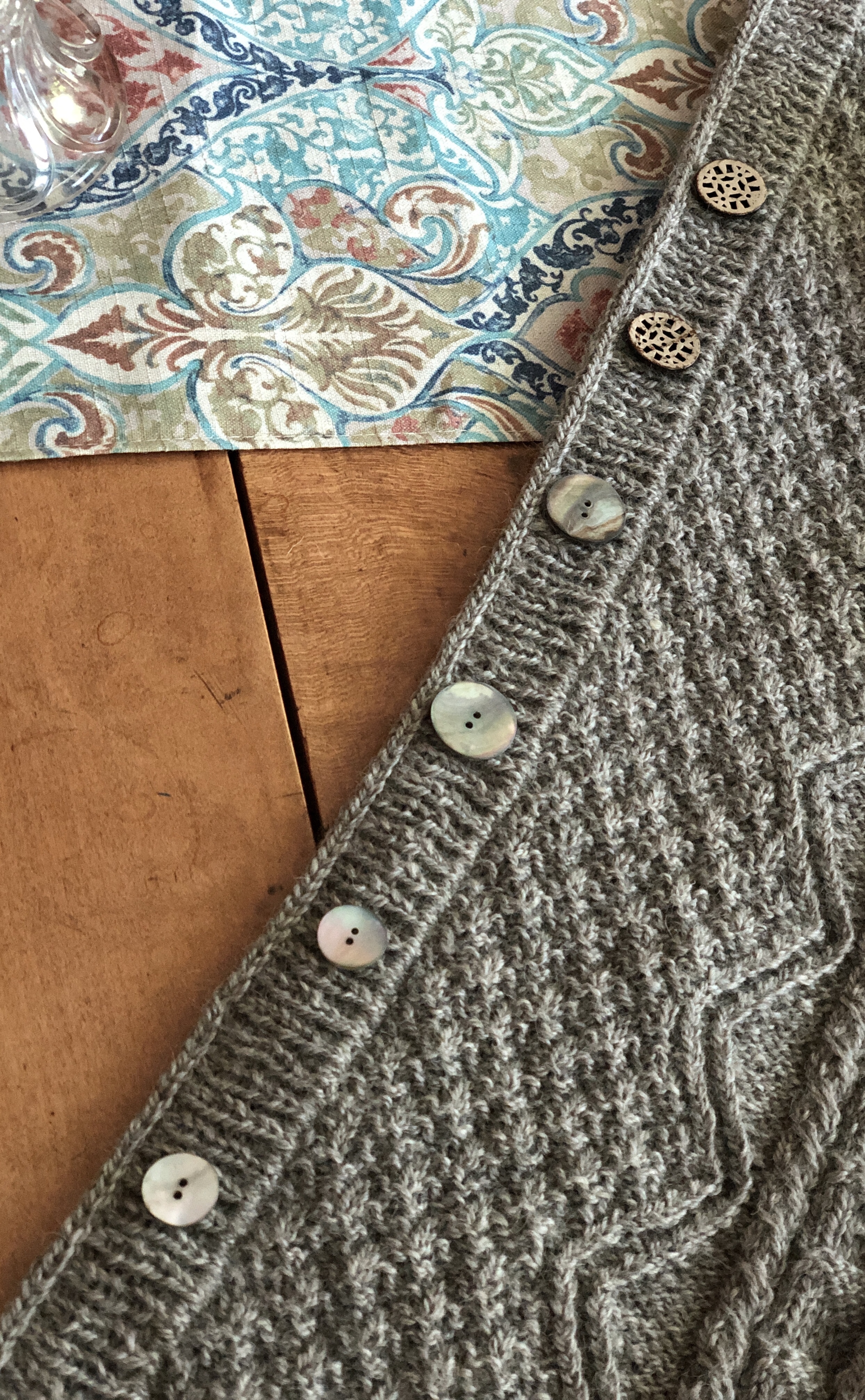
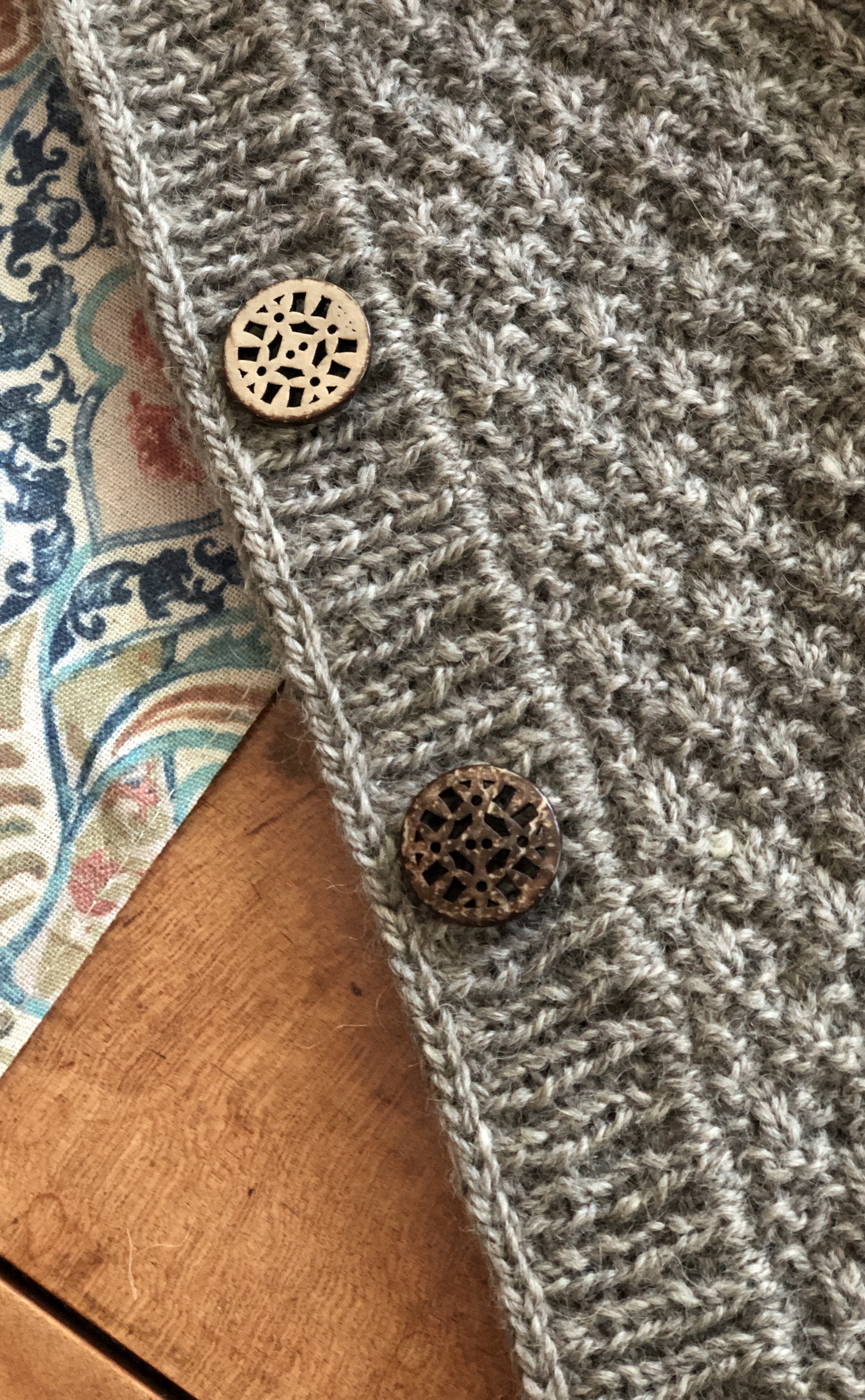
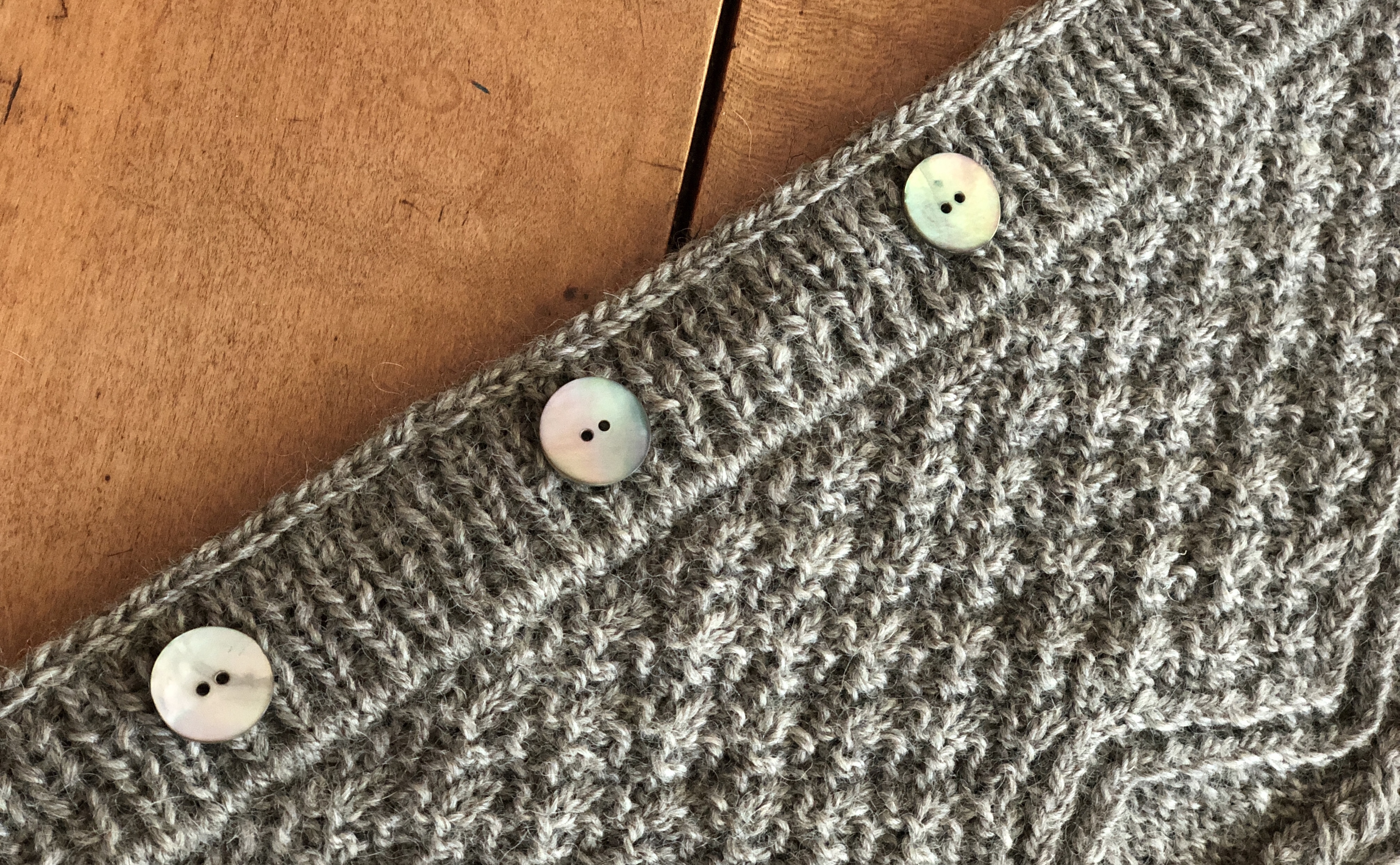
with first button band on, it’s time to review the button choices. The larger mother of pearl and coconut shell buttons I thought I would like based on swatching look a bit large on the finished band, so the smaller smokey shell buttons look to be the best choice.
With my button choice finalized, it’s on to the second button band, and buttonholes.
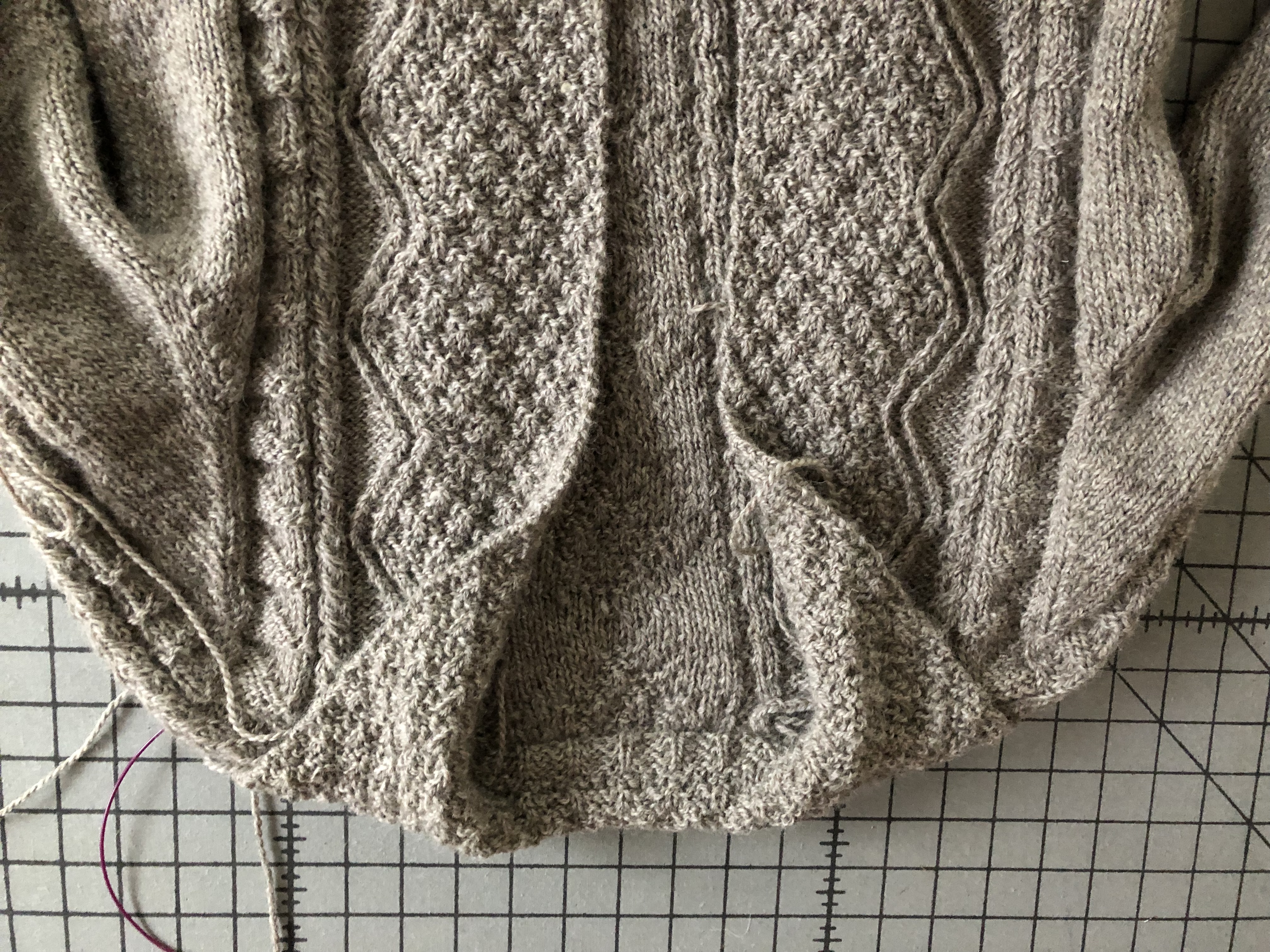
I ripped out the collar and neckband, picked up fewer stitches along the saddles and back neck, and reknit a narrower collar — narrower by almost the width of the button bands to be added.
I will have to give up on the option to wear the collar buttoned up all the way and loosely folded over, but I’m much more likely to wear the collar open, and it will look more balanced this way. Picking up fewer stitches also gives a closer fit around the neck and I the necline did not pucker as I had feared.
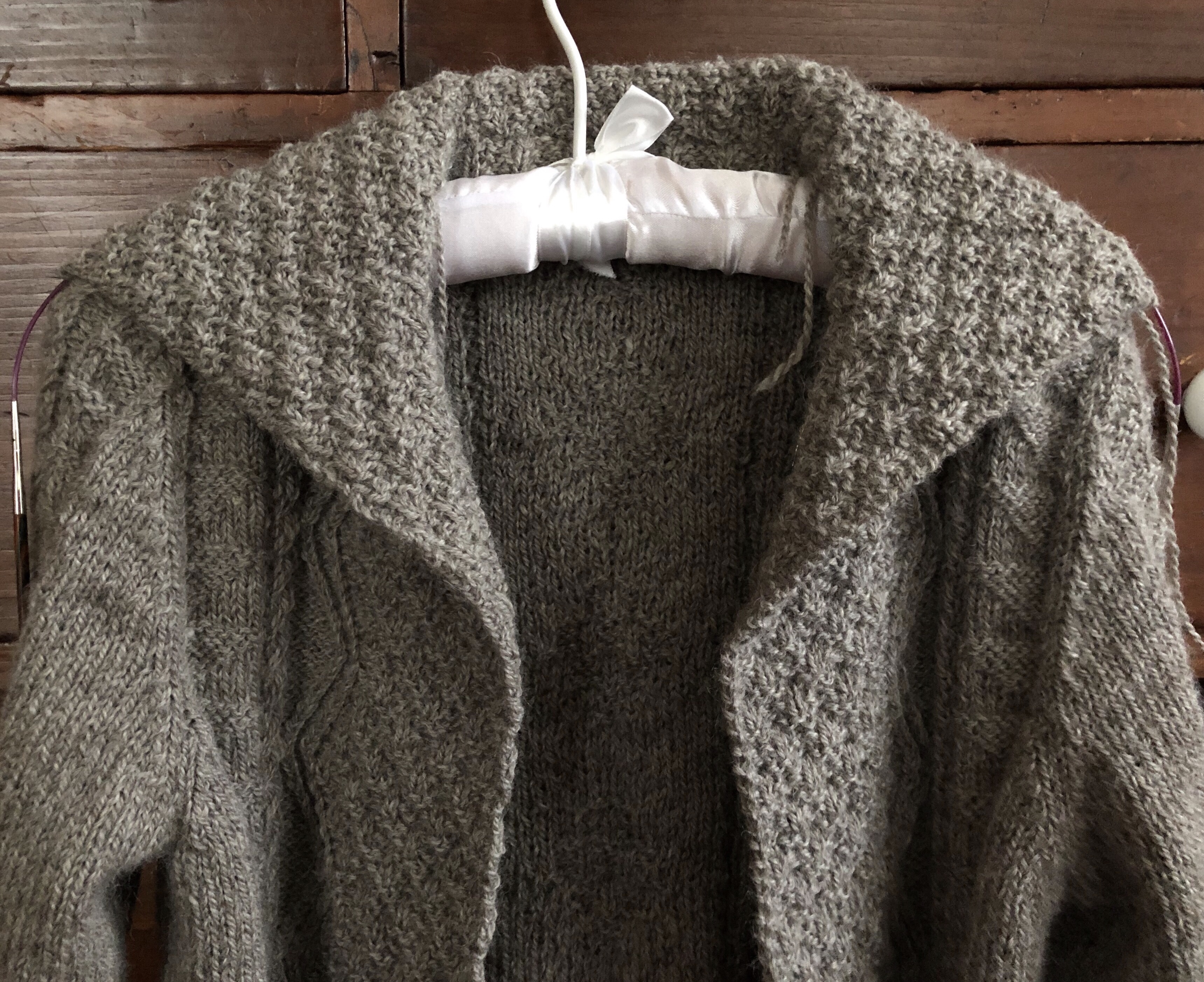
I really like the way the collar looks … now. But once I put the button bands on, it will be 1.75 to 2″ wider on each side, and hang down over the shoulder( and I can’t leave the button bands off, or it won’t close).
I could re-knit the collar, and pick up fewer stitches across the saddles and back neck, but not 4″ worth, without leaving puckers. Decisions.
Construction notes: double needle pickup across the saddles and back neck, to a height of 1″ across the back neck, tapered with short rows along the saddles to 0.25″ where the saddles meet the front. Fronts then knit from live stitches connecting along the saddles with short rows to the level of the back neck, where the rest of the stitches were picked up and knit across.
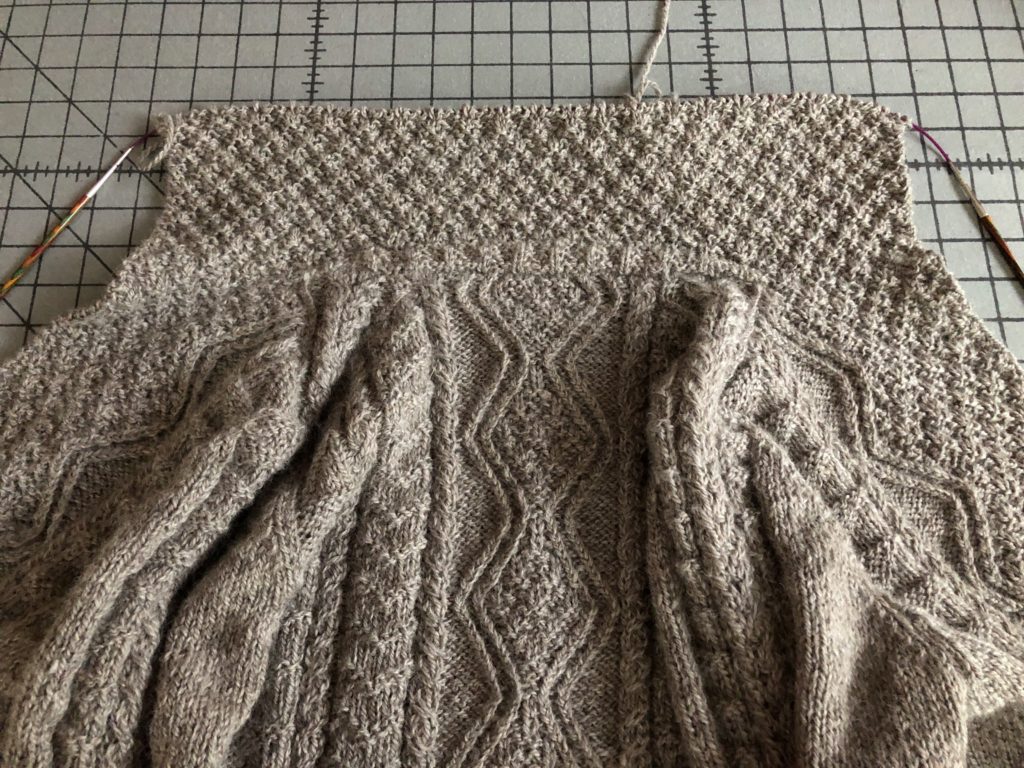
It took a lot longer than I would have predicted. but the backs, fronts and sleeves are all seamed. After all that ripping and re-knitting, the sleeve caps went in without much trouble — it actually took more ripping and re-seaming to get the saddles to sit straight across the stair-stepped shoulder decreases. the whole thing looks like a depressingly rumpled and shrunken mess, but until it is washed and blocked, that is to be expected. I really like the way the saddles look, but I guess they will be lost underneath the collar.
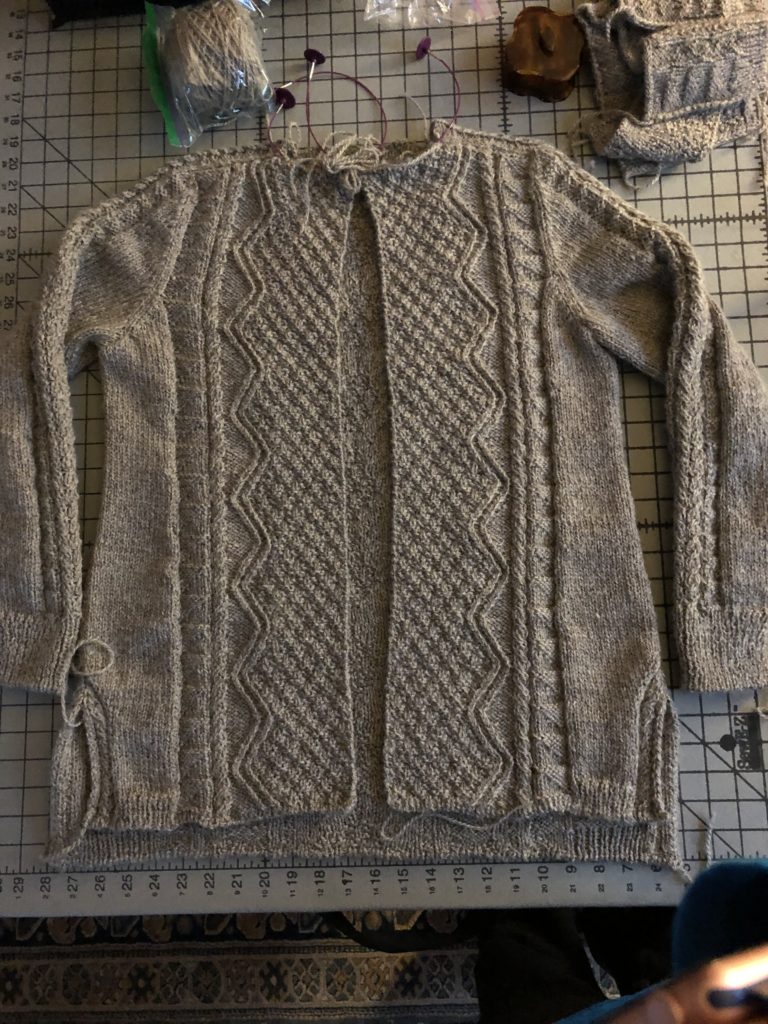
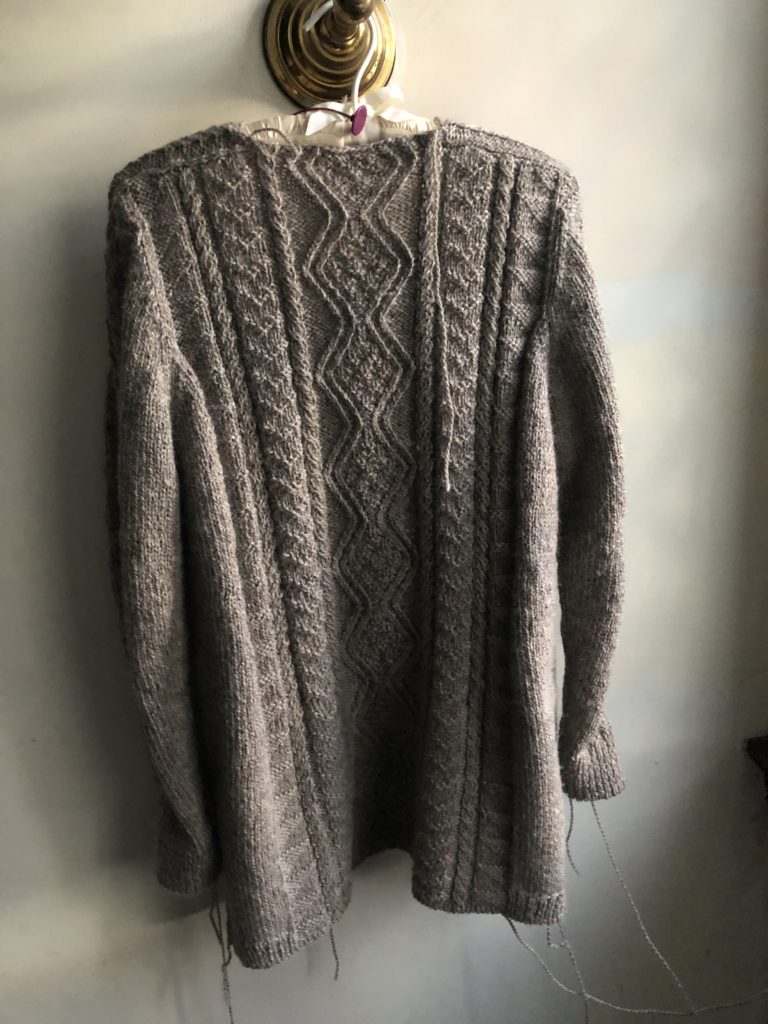
Lots and lots of ripping and re-knitting, both of the transition between the cuff and sleeve body pattern, and the sleeve caps (along with the saddles). It took a couple of tries before I felt I had a good match between the cap and the armhole, but I think I’m finally there — seaming will tell.
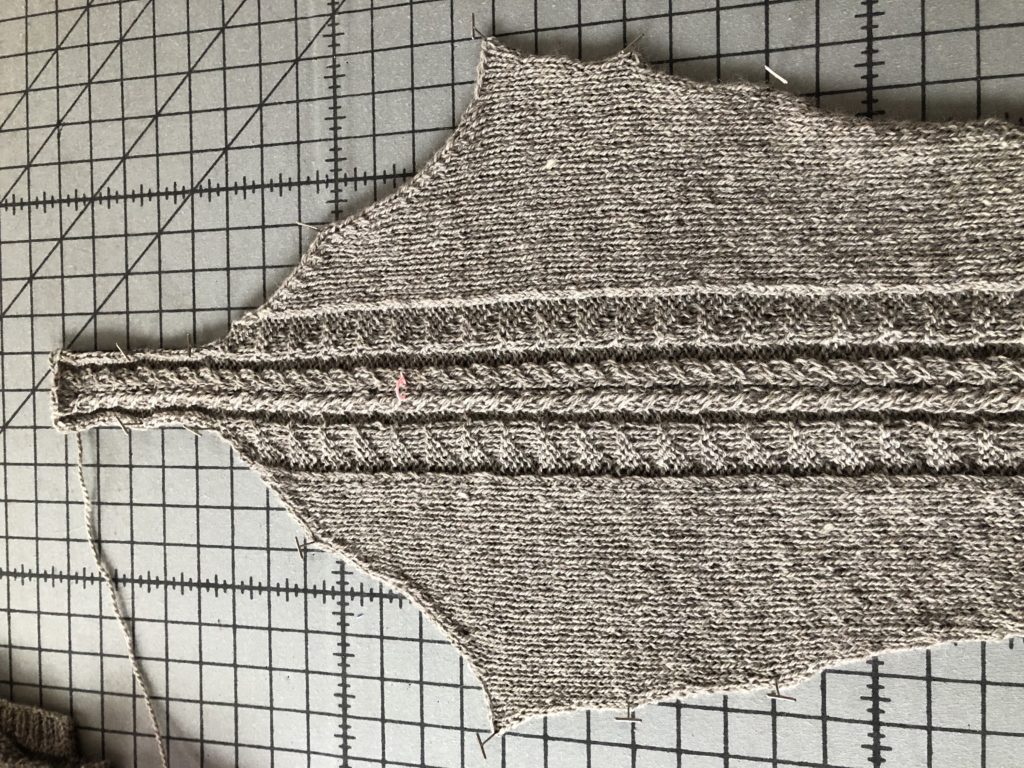
With my fronts and backs knitted, this month’s meeting focused on planning for my sleeves, including the shoulder saddles.
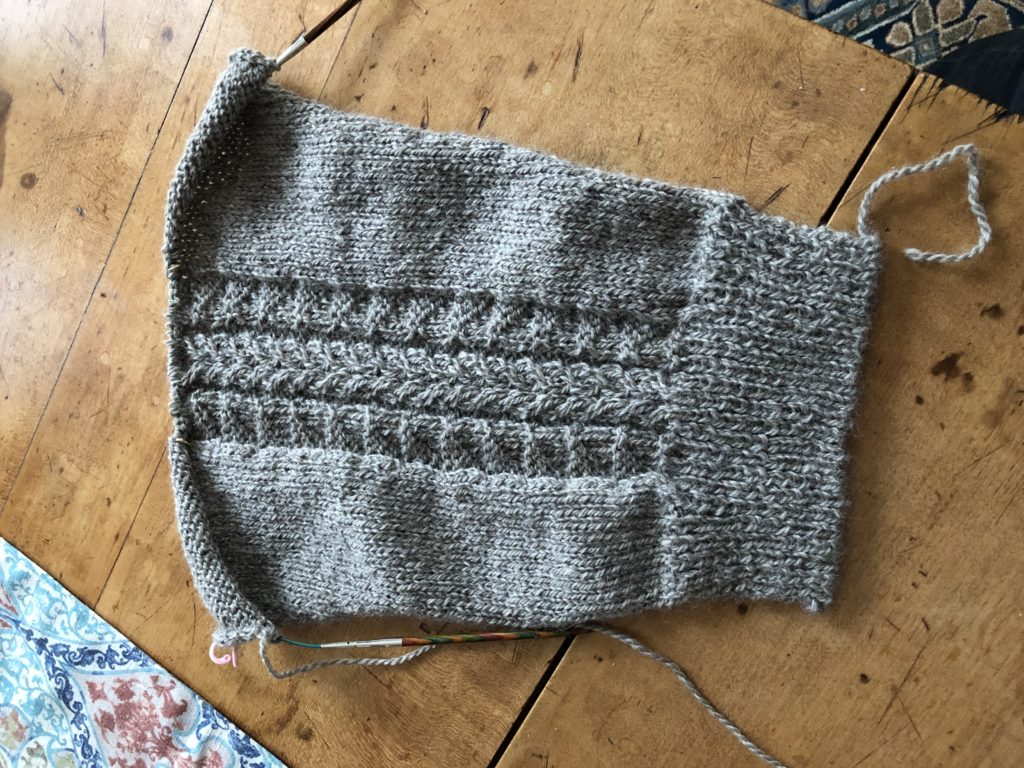
We reviewed swatches for the pattern to run up the sleeve and across the saddle. I had decided on pairing the slip-stitch cable used on my fronts and backs as a center sleeve motif to continue through the saddles, and had a few options for side motifs. Kirsten agreed that the scaled-down flag motif worked best.
I had started calculations for stitch counts and rows between the sleeve increases, and it seemed I was going to need increases less than an inch apart, which seemed off to me. We talked about ease allowances, and Kirsten suggested that I would probably want more ease through the wrist — increasing that measurement puts my increases at 8 row intervals, or just over an inch apart.
